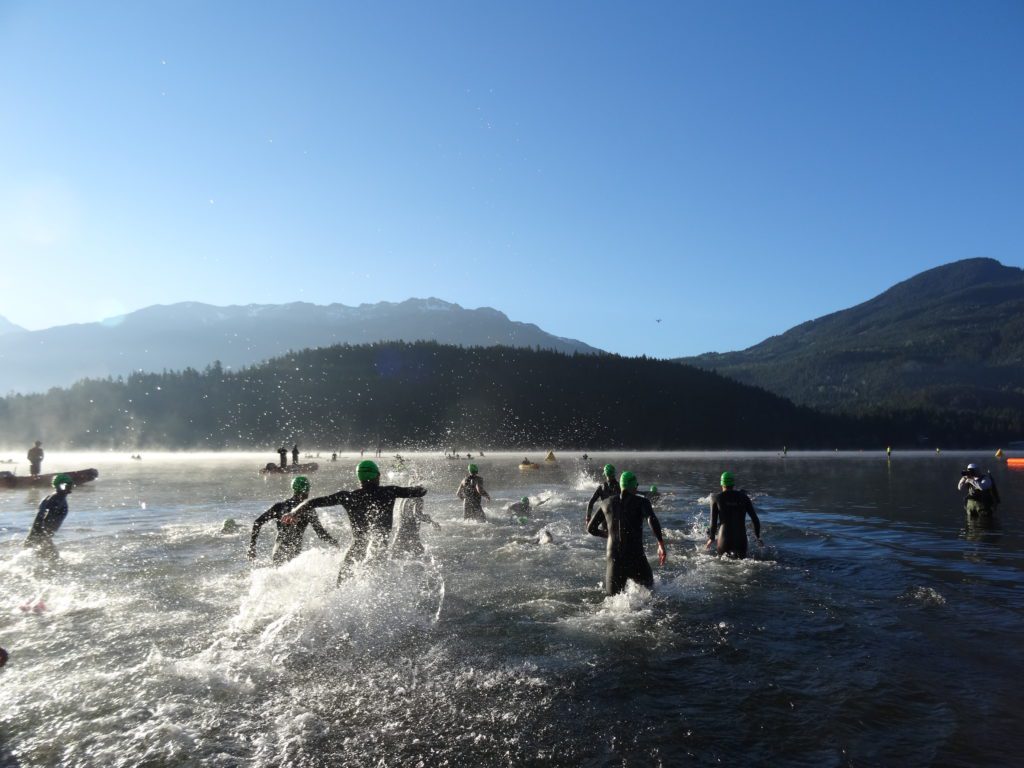The top 5 open water skills you need to master
We've summarized the five skills that are most important to master in the open water.

Great open water swimmers have an arsenal of tools that allow them to showcase swim fitness in open water. Without a black line to guide them in rough and choppy conditions, the best will still swim the shortest line at the fastest pace, regardless of conditions. The following skills are useful in mastering an open water swim
1. Sighting
In order to find the shortest line to the buoys, you need to sight to steer a course in the right direction. If the water is calm, the buoys might be an obvious choice to aim for, but in rougher conditions, landmarks on shore will be the only option. During the days prior to the race, check out the course from the beach and from in the water. Look for large objects on shore that will be very easy to see while swimming and use those to guide you, rather than the swim buoys. If you’re headed out into the ocean, you may only get to use the buoys on the way out – but often you will be able to swim on feet for at least the first 200 to 400m. To sight effectively, you don’t want to lift your entire head out of the water. The higher you lift your head, the lower your feet drop and the more drag you create. Instead, lift your head only high enough to see the landmark you’re looking for, then put your head down and swim 10 to 20 strokes before sighting again.
2. Swimming in a draft
Swimming while drafting a leading swimmer gives the trailing swimmer a significant benefit. As a beginner, you may choose to find some space to swim alone, but if you’re looking to swim faster, effective drafting will be key to improving your swim split. The best advantage is found while swimming between a front swimmer’s hip and ankles, as the trailing swimmer will surf a bow wave created by the leader. However, there is still a lot of benefit to swimming within 24 inches of another swimmer’s feet. The second advantage to swimming on the hip of another swimmer is the sighting requirement is eliminated, so you will not slow yourself down with the drag caused by sighting. Practicing swimming on the hip and on the feet of another swimmer is important and can be facilitated in the pool or in open water.
3. Swimming in a wetsuit
A wetsuit offers a significant amount of buoyancy in the water, so most athletes find they can swim much faster while wearing one, particularly for those athletes with poor body position or a weak kick. However, there’s an increased amount of resistance on the shoulders which takes some time to adapt to. Before racing in a wetsuit, it’s good to train in it, even if it’s in a pool. Doing so will prepare the shoulders for the added resistance of the wetsuit. Generally pools are too warm to swim for long periods of time in a wetsuit, but even including short 1000 m warm ups in a wetsuit will allow you to get accustomed to the feel before an early season race, and to practice getting in and out of the suit quickly.
4. Increased turnover
The rougher the water conditions, the more important a quick turnover will be for effective open water swimming. In a pool with calm, flat water, you can take long, leisurely strokes and pull a lot of water with each. In open water, your hands will be buffeted by waves, other swimmers and current. The chances of catching water throughout the pull from front to back are minimal. The most effective swim stroke in open water is one with high turnover where you grab as much water as you can then quickly get your hand recovered and back in the water to pull again. Practicing increasing your stroke rate in the pool will allow you to develop the fitness and rhythm to maintain a higher turnover when you swim open water.
5. Entering and exiting the water
The swim start in racing is rarely as simple as diving off a dock. Most Ironman swims start with treading water, so this kind of start if fairly easy to manage, but a run in start through the waves will require some practice. Learning how many steps you can take before you take a running dive, how to time diving into waves, how to streamline your dive after running in, and getting in enough strokes to make the pack before you start sighting, all take practice. Getting out of the water also requires some practice to become proficient. You want to swim up to the point where your hands touch the bottom, then quickly stand up and bound out of the water so you don’t lose your group before the transition. For races in a multi-loop format, having good entry and exit skills can make the difference between making the front group or being dropped, even if you’re the fastest swimmer.
These five skills should be included in all open water training sessions to ensure you are fully prepared for your next open water swim event. Training in a pool is excellent for developing speed and fitness but the environmental challenges of open water swimming do take some practice. Open water swimming is challenging but is a great way to escape the monotony of the black line in the pool.

